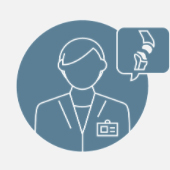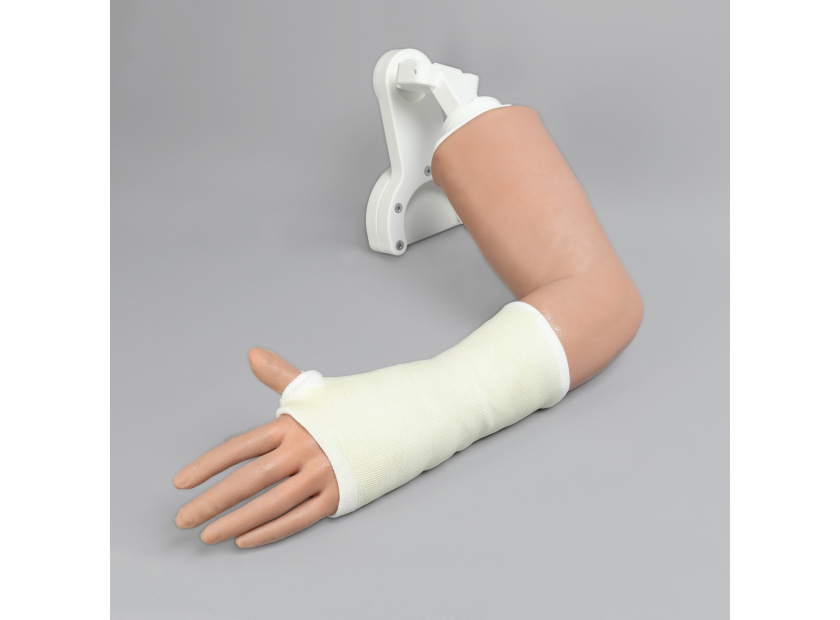Trauma Training: Bone Models Provide Hands-On Learning
Today's most effective medical training models are designed in response to real world problems. The creation of a highly adaptable hands-on trauma training bone model, for one, was prompted by research showing that failure to correctly perform a fracture reduction was leading to unnecessary additional procedures among young patients. It was revealed that approximately one-third of pediatric distal radius fractures would redisplace following treatment and require further attention.
In response to this finding, medical professionals worked in partnership with training model engineers to produce a unique fracture reduction model that could encourage better outcomes for pediatric patients. This model is a working example of how medical needs can be translated into practical solutions. Its example can be followed in any medical field and in support of any procedure.
Reproducing Authentic Look, Feel, and Movement
The goal of the engineers engaged to address the pediatric fracture displacement problem described above was to create a model that authentically recreated the look, feel, and movement of a human arm. The result of their efforts, in consultation with medical professionals in the field, was the Colles Fracture Reduction and Casting Technique Trainer.
The trainer allows trainees to complete a hands-on fracture reduction with a number of advanced features, most notably, fluoroscopic visualisation. The model is built with internal radiopaque materials that can be used to replicate real-time imaging techniques, such as continuous x-ray, and so expose students to the logistical and physical demands of applying a cast specific to fracture type, severity, and location.
While the model is constructed from lifelike skin materials, it can be reused through multiple cast settings to suit a large cohort or the repeated instruction of individual students.
A further distinguishing feature of the trainer is its lifelike movement. The model can be manipulated through the most common patient body positions to give students a greater insight into the rigours of real-world trauma procedures. This dedication to reproducing real-world performance is the defining aspect of today’s most effective medical training models.
206 Sites of Potential Bone Trauma
The Colles Fracture Reduction and Casting Technique Trainer provides an elegant solution to a specific problem, but there are more than 200 bones in the human body, and all of them have the potential need for a trauma training bone model. While it’s not practical to equip a training cohort or specialists office with hundreds of bone models, there are affordable and effective models available to enhance the clinical aptitude of novice practitioners.
This can involve the recreation of specific fracture types in abstracted models that represent a generic trauma location. Such models can highlight the intricacies and challenges in traumas that occur across a range of different fracture types, such as spiral or four-part fractures on extremities. These models—less than $40 per unit—are affordable enough to become staples of cohort instruction, and they are built from advanced model materials that will withstand hands-on student manipulation.
As was evidenced in the pediatric study above, hands-on instruction has been found to help residents reach defined minimum levels of competency necessary to deliver successful outcomes in clinical settings. In addition to promoting basic competencies, engineered model solutions are often cheaper than cadaveric alternatives, and present none of the moral, presentation, logistical, maintenance, or disposal issues. The reusable and scalable nature of the leading models also allows instructors to repeatedly guide students through complex procedures.
All the Rods, Plates, and Braces
Hands-on in a medical setting means the ability to apply best practices and techniques under authentic real-world simulation. Towards this end, medical model engineers and working instructors have collaborated on a broad number of training resources that can replicate multi-step interventions.
There are advanced trauma training bone models that cover almost all the most common presentations, such as fracture of the tibial plateau or the scaphoid. In both these cases, the fracture is placed within the broader context of the entire limb. With the tibial plateau model students can complete fracture reattachment and joint articulations with reusable latex bands. Again, the models are robust and affordable and built for the practical rigors of the learning environment.
Purpose-built training models can also reach beyond static simulations to include dynamic features that better replicate the pressures and logistics of trauma medicine.
Real-time Feedback and Lifelike Materials
The most advanced of today’s engineered medical training models include a range of technologies that make them applicable to bone trauma treatment and interventions across any speciality.
These technologies include, but are not limited to:
Model expansion |
Known as buildability, this feature allows instructors to alter models in response to the improving technical abilities of their students. It can greatly expand the lifespan of a model across cohorts. |
Dual usage |
Similar to the flexibility of the expanded models above, dual usage refers to the ability for models to be actioned in both open and closed settings. This encourages the mastery of less invasive arthroscopic techniques. |
Haptic feedback |
The technology that stands to revolutionize communication and digital entertainment can be equally transformative in non-clinical training environments. Models produce noise or vibration when a device comes into contact with internal materials, providing immediate stakes to simulated procedures. |
Radiopaque materials |
The Colles Fracture Reduction and Casting Technique Trainer is an example of a model that includes radiopaque materials that block radiation and enable advanced medical imaging. As in the trainer the technology can be used to practice complex surgical and treatment triangulation, or it can be used as a pure diagnostic tool. |
Each of these advances provides an example of how technology can be used to build a new generation of teaching models that solve real world problems, both in instruction and practical clinical intervention.
Create Your Own Trauma Training Bone Models
The development of the Colles Fracture Reduction and Casting Technique Trainer is a prime example of how medical research and medical engineering can be brought together to improve real-world clinical outcomes.
The model was designed in strict accordance with medical best practice using technology that can provide conditions that lead to more engaging, and more effective instruction. In this case, the goal is to reduce the number of pediatric displacements by better educating physicians in how to apply effective reductions.
But the case is just an example. The techniques and technologies at the disposal of today’s leading engineers mean there is potential to find solutions to any clinical or instructional challenge you encounter in your professional life.
All you need is the right engineering partner.
Models created by Sawbones are designed to increase the clinical competency of your students through more impactful and more engaging lessons. For more information on our offerings or to talk about custom training models, contact us at 206-463-5551.

If you're seeking something you can't find on our website, our sales team is happy to help. We can either direct you to the right model or provide a free quote on the right custom project to meet your needs. Discover options with our clear bone models, laminated blocks, custom displays, or other machining projects.








